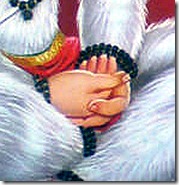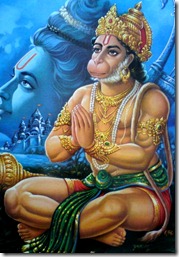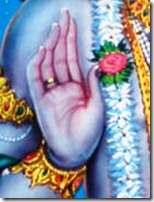What is dry skin?
Dry skin is a very common skin condition characterized by abnormal or excessive dryness of skin. While dry skin tends to affect males and females equally, older individuals are typically much more prone to dry skin. The skin in elderly individuals tends to have diminishing amounts of natural skin oils and lubricants. Areas such as the arms, hands, and particularly lower legs tend to be more affected by dry skin. Dry skin is also known as xeroderma.

Dry skin may be a mild, temporary condition lasting a few days to weeks. Dry skin may also become a more severe, long-term skin problem for some. Symptoms of dry skin include discomfort from skin tightness and itching. In addition, external factors such as weather can affect the severity of skin dryness. For example, cold or dry air and winter weather can worsen dry skin. Individuals whose occupations require more frequent hand-washing and sanitizing may experience dry skin more often. Dry skin may also be a side effect of some medications or a symptom from an underlying physiological disorder, like an overactive or underactive thyroid gland orSjogren's syndrome.
Skin is normally covered by sebum, which is the natural oil product of sebaceous glands. Sebum helps to prevent skin dehydration. When the skin's fatty oils are stripped away, the skin loses its protection and loses moisture more easily. As skin becomes dry, it also may become more sensitive and prone to rashes and skin breakdown. This condition is sometimes referred to as xerosis. Dry skin may be an entirely invisible skin condition, or may cause a fine dry powder-like appearance of the skin. Untreated, dry skin may become irritated and result in a red rash(xerodermatitis).
Simple prevention and treatment measures are very effective in the treatment of dry skin. Basic dry skin prevention steps include avoidance of harsh soaps and chemical cleansers. Treatment generally requires more frequent and regular applications of bland emollients and moisturizers. Untreated, dry skin may result in complications, including rashes, eczema, secondary bacterial infections, cellulitis, and skin discoloration. Fortunately, dry skin is usually mild and can be easily remedied.
Dry skin is a very common skin problem and is often worse during the winter when environmental humidity is low (i.e., "winter itch"). It can occur at all ages and in people with or without other skin problems. This newsletter discusses the causes of dry skin and how to treat and prevent this problem. We hope you find it useful
What causes dry skin?
There is no single cause of dry skin. Dry skin causes can be classified as external and internal. External factors are the most common underlying cause and are the easiest to address. External factors include cold temperatures and low humidity, especially during the winter when central heaters are used. Internal factors include overall health, age, genetics, family history, and a personal history of other medical conditions like asthma, allergies, and atopic dermatitis. In particular those with thyroid disease are more prone to developing dry skin.
External factors that cause dry skin include
- over-washing with harsh soaps,
- overuse of sanitizers and cleaning agents,
cold temperature,
low humidity.
During winters, individuals may tend to take longer, hotter showers and baths. This prolonged exposure to hot water can strip off the natural oil from the skin, making the skin unprotected. Skin that feels overly tight after bathing may indicate excess removal of natural skin oils.
One of the most common factors causing dry skin is frequent application of harsh soaps. The type of soap may have a large impact on dry skin. Soap can abruptly take away skin oils. The more often skin is scrubbed with soap, the easier the skin dries out. Bathing with harsh soaps such as Ivory, Irish Spring, Coast, Safeguard, Shield, Lever 2000, and Zest can worsen dry skin.
Moreover, dry skin may persist or worsen if using moisturizers improperly or choosing an inadequate moisturizer. Sometimes, the material of different clothing can also affect dry skin. Some materials such as wool or synthetic fibers tend to irritate the skin and worsen dry skin.
Dry skin condition may be caused by taking some medicines as well. Some examples are drugs for high blood pressure, allergies, and acne. Occasionally, a dry skin problem can be a sign of an internal medical condition. For instance, aging may inherently make people more prone to developing dry skin. Aging especially in women may cause an increased susceptibility to dry skin due to changes in hormone levels. In addition, eczema, psoriasis, diabetes, hypothyroidism, Sjogren's syndrome, and malnutrition are all associated with dry skin.
Dry skin very commonly produces itching, which can be severe and interfere with sleep and other daily activities. Repeated rubbing and scratching can produce areas of thickened, rough skin (lichenification). Dry, thickened skin can crack, especially in areas subject to chronic trauma (e.g., hands and feet), causing painful cracks in the skin (fissures). Dry skin and scratching may result in a dermatitis when the skin becomes red (inflamed) in addition to dry and scaly. Round, scaly, itchy, red patches scattered over the legs, arms and trunk (nummular eczema) may also appear. The appearance of yellow crusts or pus in these areas indicates that a bacterial infection is developing. This would require specific antibiotic therapy from your dermatologist or family physician.
If your skin is very dry, or if you have an associated red dermatitis, it is a good idea to seek the advice of your dermatologist or family physician. Severe dry skin is a feature of certain genetic diseases such as atopic dermatitis and ichthyosis (fish scale-like skin). In addition, people with hormone imbalances such as underactivity of the thyroid gland can also experience severe skin dryness (there are other changes in the body that accompany dry skin in this setting that helps doctors recognize this problem). On occasion red, dry skin rashes can be confused with other skin problems such as a ringworm infection or allergic contact dermatitis (i.e., a poison ivy-like skin rash), which would need different forms of treatment.
What are signs and symptoms of dry skin?
The key symptom of dry skin is itching. People who have dry skin can often find rough, dry, red patches on their skin, and these patches are often itchy. Typical skin areas affected include arms, hands, lower legs, abdomen, and areas of friction such as ankles and soles. As skin dryness becomes more severe, cracks and fissures may evolve.
Symptoms:
- Itching
Rough dry skin
Red patches
Red patches
The itchy feeling may worsen the severity of dry skin. Itching can lead to the development of the "itch-scratch" cycle. That is, as a person feels itchy, he or she scratches in response, which exacerbates the itch, and so on. The "itch-scratch" cycle is often seen when conscious control of scratching is low or absent, for instance during sleep.
Most common dry skin areas are
- the lower legs,
hands,
forearms.
forearms.
Constantly scratching and rubbing the skin may cause the skin to become thick and leathery. For others, small, red, raised bumps may appear on their skin, and these bumpy spots can be irritated, opened, and infected if scratched.
How is dry skin diagnosed?
Generally, dry skin can be easily diagnosed when the physician physically examines and visually inspects the skin. While dry skin can appear on any type of skin at any age, the elderly and individuals who frequently expose their skin to harsh soaps or detergents are more prone to developing this condition. In addition, a thorough medical history and review of the family history can help support the diagnosis of dry skin. Based on the medical history, other medical conditions may be ruled out or considered. In more difficult cases, a skin biopsy may be helpful to confirm the diagnosis and direct the treatment plan. Sometimes, a skin culture is performed by gently swabbing the skin and examining the sample under a microscope to detect bacterial, fungal, or yeast infection.
Does dry skin cause winter itch?
Winter itch is a common name for the skin symptom of generalized itching in the winter. It is primarily caused by dry skin and is most common in the elderly. Winter itch caused by dry skin may also be seen commonly in those with a history of eczema, allergies, or asthma. External factors, including cold temperatures, low humidity, and the use of central heat, tend to worsen dry skin. Therefore, some people refer the condition of dry skin in the winter as "winter itch."
Do genetics play a role in dry skin?
Dry skin may be caused by a genetic condition called ichthyosis. There are many types of ichthyosis. Ichthyosis vulgaris is the most common type and it is a severe dry skin condition, often of the front of the lower legs. Ichthyosis vulgaris causes dry, fishlike scales. Less severe types of dry skin may tend to run in families. Dry skin is also more common in atopic dermatitis, which is thought to have a genetic component.
What medical conditions cause dry skin?
Certain physiological changes and medical conditions may cause dry skin. The onset of dry skin may be due to aging or hormonal changes, as seen in menopausal women. In some cases, individuals who have medical conditions such as hypothyroidism, diabetes, or malnutrition (for example, deficiency of vitamin A) may suffer from xerosis.
The following medical conditions may cause dry skin:
- Hypothyroidism
Hyperthyroidism
Diabetes
Sjogren's syndrome
Malnutrition
Allergies
Diabetes
Sjogren's syndrome
Malnutrition
Allergies
Do any medications cause dry skin?
Medications for medical conditions like high blood pressure, (such as diuretics), allergies (such as antihistamines), and acne (such as. retinoids like Retin A) may also dry out the skin.
What is the treatment for dry skin?
The main treatment for dry skin is frequent, daily lubrication. Because most dry skin is due to external causes, external treatments like creams and lotions can be applied and effectively control the skin breakout. Often, dry skin can be improved by applying a bland over-the-counter moisturizer. Once other causes of dry skin have been ruled out, the main goals of treatments are to stop the itching, prevent loss of water, and restore skin hydration.
Light moisturizing lotions for mild dry skin
- Cetaphil lotion
Lubriderm lotion
AmLactin 12% lotion
AmLactin 12% lotion

Highly moisturizing products for severe dry skin
- Vaseline
- Aquaphor
Crisco vegetable shortening
Since itch is an important factor in dry skin, prescription anti-itch medications can be applied to help control the itchy feeling and prevent the skin condition from worsening. Often topical steroid creams like hydrocortisone cream are added to the use of an over-the-counter moisturizer. When the itchy patches are relatively small, topical corticosteroid creams can be applied to localized areas to decrease inflammation and control itching.
In addition, MimyX and Atopiclair are the two nonsteroidal ceramide-based creams that are newly approved by the U.S. Food and Drug Administration and can be applied to help restore water in the skin. They do not contain topical steroids or calcineurin inhibitors and share similar functions and effectiveness of low-potency topical steroids.
Oral corticosteroids, such as prednisone pills, may rarely be prescribed for severe dry skin with rash. Oral steroids are reserved for highly resistant dry skin and itching that involves larger areas of the body and cases that fail to improve with creams and lotions.
What are some home remedies for dry skin?
Home remedies for dry skin include applying Crisco vegetable shortening or Vaseline two or three times daily.
Dry skin may be improved by taking lukewarm showers or baths and avoiding excess skin scrubbing. Hot water and harsh scrubbing can take away the natural oils that protect skin and make the skin even drier.
Dry skin may be prevented by use of gentle cleansers. Non-scented, mild cleansers or soap-free products like Aveeno, Cetaphil, Dove, or Neutrogena are recommended for dry and sensitive skin. Many scented, deodorant, and antibacterial soaps can be too harsh and wash off natural skin-protecting oils.
Gentle exfoliation and hydration may help improve the appearance of non-facial dry skin. Special moisturizers containing lactic acid (Amlactin, Lac-Hydrin), salicylic acid (Salex), or urea (Urix or Carmol) are very effective in gently exfoliating the skin and helping other moisturizers penetrate into the skin more deeply.
Mild soaps and cleansers include
- Dove soapless cleanser
Aveeno cleanser
Cetaphil cleanser
Cetaphil cleanser
Mild moisturizers without perfumes are good for dry skin. Thick and greasy emollients also work best. Typically, moisturizers should be applied within three to five minutes of bathing when the skin is just patted dry and still damp. Sunscreens with a sun protection factor (SPF) of at least 15 or higher help protect the skin from possible sunburns and damage caused by UVA and UVB rays.
Proper nutrition and essential factors in the diet may help improve dry skin. For instance, essential fatty acids (such as omega-3) can be metabolized in the body to produce natural, moisture-retaining oil barriers of the skin. Omega-3-rich foods include flax, walnuts, safflower oil, and cold-water fish such as tuna, herring, halibut, salmon, sardines, and mackerel.
The general skin and environment moisture is very important in improving dry skin. Maintaining the skin at optimal hydration and using an indoor humidifier may help improve dry skin.
How can dry skin be prevented?
To prevent skin from drying out, it may be helpful to humidify the indoor environment especially during the drier, winter months. Sometimes decreasing bathing frequency, avoiding strong soaps, and decreasing exposure to detergents also may help improve dry skin. Harsh cleansers can strip away the natural oils and sebum from the skin. Limiting exposure to irritants such as solvents and wool clothing can prevent the dry skin condition from worsening.
- Avoid strong soaps and detergents.
Use indoor room humidifiers.
Limit exposure to irritants such as solvents.
Avoid wool clothing.
Use cotton and natural fiber clothing
Limit exposure to irritants such as solvents.
Avoid wool clothing.
Use cotton and natural fiber clothing
Use of skin moisturizers (emollients) for long term control and prevention of dry skin.
Dry skin is usually a long-term problem that recurs often, especially in winter. When you notice your skin beginning to get dry, resume your moisturizing routine and avoid the use of harsh soaps. If the itchy, dry, skin rash returns, use both the moisturizers and the prescription steroid cream or ointment.
There are basically two types of moisturizers &emdash; facial moisturizers and body moisturizers. Most facial moisturizers on the market relate largely to makeup and cosmetic concerns. They are surrounded by considerable mystique and are often outrageously expensive. These products are different than body moisturizers in that they are very carefully designed to avoid causing allergic reactions (hypoallergenic) and flares of acne on the face (noncomedogenic). These types of facial moisturizers will not be discussed further here. While dryness of the skin of the face is usually not a major problem for people during the winter, the use of certain medications such as anti-acne treatments can produce considerable facial dryness in the winter or summer. There are several excellent facial moisturizers that also contain effective sunscreen chemicals that can be used in this setting (Neutrogena Moisture SPF 15 Untinted, Cetaphil Daily Facial Moisturizer SPF 15).
There are four basic classes of body moisturizers &emdash; ointments, oils, creams and lotions (listed in decreasing order of moisturizing power). It should be noted that all of the moisturizer products mentioned in this article are available without prescription.
Ointment moisturizers have the greatest ability to trap moisture in the skin, but they have the greasy consistency and feel of Vaseline Petroleum Jelly. People often shy away from using them because of the greasy feel, but this can be minimized by applying a small amount and rubbing it into the skin well. Examples of effective ointment moisturizers include Aquaphor and plain Vaseline Petroleum Jelly. In addition to brand name moisturizers, some common household products, such as Crisco vegetable shortening, can be used as very inexpensive body moisturizers. Again, the key to using an ointment is to apply small amounts and rub it in well.
Oil moisturizers are less greasy but still effective. Examples of oils that can be applied directly to the skin include baby oil, mineral oil, vegetable oil, and bath oil. Bath oils used in the bath water make the tub too slippery and should not be used. It is preferable to apply bath oils after getting out of the tub or shower, just as you would other moisturizers, directly to damp skin immediately after a light toweling off to partially dry the skin.
Cream moisturizers are usually white and disappear when rubbed into the skin without leaving a greasy feel. As a result they tend to be more popular than ointments. Examples of effective cream moisturizers include Original Eucerin Cream, Aquaphilic, Cetaphil Moisturizing Cream, Vaseline Cream, Eutra/Elta, Nutraderm, Moisturel, Nivea, Nutraplus, Complex-15, Carmol, Pen-Kera, and Neutrogena Hand Cream (especially helpful for dry, chapped hands).
Lotion moisturizers are suspensions of oily chemicals in alcohol and water. Lotion moisturizers are generally the least greasy and the most pleasant to use and therefore are quite popular. However, because of their alcohol content, they can be somewhat drying when used repeatedly compared to ointments and creams. The bottom line is that if the moisturizer you choose does not feel at least a bit greasy you may not be getting as strong a moisturizer as you might need. Examples of popular lotion moisturizers include Vaseline Intensive Care, Nutraderm Keri, Lubriderm, Curel, and Complex 15, Nivea, U-Lactin, Neutrogena, Nutraplus, Eutra Lite, Moisturel, Complex-15, Lac-Hydrin 5. There are many other cream and lotion moisturizers on the market that have not been listed here because of space constraints. We have chosen to list some of the more popular products and those more often recommended by dermatologists.

Tip 1:
Should use scrubs to remove the dry scaly skin.
Apply ½ tsp of Vitamin E oil with 2-3 drops of lime juice and ½ tsp of glycerin.Tip 2:
Apply a mixture of 1 tsp warm Olive oil with a few drops of glycerin and 2-3 drops of lime juice.Tip 3:
1 tsp of milk cream with2-3 drops of lime juice mixed well. This should be applied 10 minutes before a bath. It reduces the dryness and also is good when applied in Winter.Tip 4:
Plain, whole milk, applied and left on for 10 minutes and washed with cold water helps.
This should be done twice a day.
Should use scrubs to remove the dry scaly skin.
Apply ½ tsp of Vitamin E oil with 2-3 drops of lime juice and ½ tsp of glycerin.Tip 2:
Apply a mixture of 1 tsp warm Olive oil with a few drops of glycerin and 2-3 drops of lime juice.Tip 3:
1 tsp of milk cream with2-3 drops of lime juice mixed well. This should be applied 10 minutes before a bath. It reduces the dryness and also is good when applied in Winter.Tip 4:
Plain, whole milk, applied and left on for 10 minutes and washed with cold water helps.
This should be done twice a day.
1. Keep It Cool
Believe it or not, the best way to battle skin dryness when the weather is cold is to stay away from hot water. Of course, you don’t have to subject yourself to cold showers or anything so extreme; however, showering or washing your hands in lukewarm water is best. Moreover, you should try not to stay under the water for too long. Ten minutes at most is ideal. If the prospect of giving up long hot baths or showers doesn’t appeal to you, then the next step for avoiding skin dryness during the colder months might be a better alternative.
2. Use More Moisturizer!

Moisturizers help form a protective barrier between your skin and the harsh effects of cold weather. Whatever kind of lotion or moisturizing cream you choose, the best time to apply it is right after a bath or shower. Dry off as quickly as you can, even if you just pat your skin dry, and then apply the moisturizer where you are most likely to experience dryness. Typically, this is on the face, arms, and legs. If standard lotions don’t do the job for you, look for an ointment or a thick cream instead. Some people find that baby oil works best.
3. Hydration Essentials
To avoid skin dryness in cold weather, it’s important to keep your skin hydrated. You can do this in several ways. The first is easy. Make sure you drink the recommended amount of water each day, which is at least eight ounces of water, eight times a day. Another option is investing in a humidifier. Humidifiers can help skin dryness because they mimic the beneficial effects of humidity in warmer weather by keeping skin hydrated.
4. Lose the Soap
The soap you use may not be helping your proclivity for developing dry skin in cold weather. Often, soaps that contain high amounts of fragrance can be irritating to the skin. Try a milder soap instead, preferably one with built-in moisturizers.
5. Was It Something You Ate?
Your diet may also contribute to how your skin reacts to colder temperatures. Typically, tomatoes, cola-based soda drinks, chocolate, and certain spices cause the most problems. Citrus fruits can also play a role. Try cutting these foods out of your diet and see if your skin improves.
 “Or what will Sugriva or the assembled monkeys or the two sons of Dasharatha say to me when I return to Kishkindha? If going there, I say to Kakutstha [Rama] the supremely detestable news that I have not found Sita, He will surely abandon His life.” (Hanuman, Valmiki Ramayana, Sundara Kand, 13.22-23)
“Or what will Sugriva or the assembled monkeys or the two sons of Dasharatha say to me when I return to Kishkindha? If going there, I say to Kakutstha [Rama] the supremely detestable news that I have not found Sita, He will surely abandon His life.” (Hanuman, Valmiki Ramayana, Sundara Kand, 13.22-23) Facing mental turmoil, Hanuman had two primary options available to him. The first was to go back to Kishkindha, the place he resided, where Sugriva and everyone was waiting. This was only an option because Hanuman had searched exhaustively through the city of Lanka for Sita. Initially, many monkey search parties were dispatched around the world to look for the princess. No one knew where she was, so she could have been anywhere. The strongest and most capable group, which not surprisingly had Hanuman in it, came upon some valuable intelligence. An aged bird named Sampati, who had originally descended from the sky to eat the monkeys, informed them that Sita was on the island of Lanka, taken by the Rakshasa king named Ravana. Hanuman, being the only member in his group capable of leaping over the ocean to reach the island, stepped up to the plate.
Facing mental turmoil, Hanuman had two primary options available to him. The first was to go back to Kishkindha, the place he resided, where Sugriva and everyone was waiting. This was only an option because Hanuman had searched exhaustively through the city of Lanka for Sita. Initially, many monkey search parties were dispatched around the world to look for the princess. No one knew where she was, so she could have been anywhere. The strongest and most capable group, which not surprisingly had Hanuman in it, came upon some valuable intelligence. An aged bird named Sampati, who had originally descended from the sky to eat the monkeys, informed them that Sita was on the island of Lanka, taken by the Rakshasa king named Ravana. Hanuman, being the only member in his group capable of leaping over the ocean to reach the island, stepped up to the plate. In the above referenced verse from the
In the above referenced verse from the  With ordinary tasks, too much concern for the outcome can hinder performance. With devotional activities, the more concern there is for the happiness of the Supreme Person, the greater the chances of victory there will be. If God can give us everything, why wouldn’t He allow us to succeed in serving Him? Activities in maya, or illusion, don’t have any winners or losers, just temporary shifts in opulence and destitution, similar to the many waves of the ocean. One person may gain a little bit while another loses, but in the end there is no progress made towards full enlightenment, which is the ideal destination for the human being.
With ordinary tasks, too much concern for the outcome can hinder performance. With devotional activities, the more concern there is for the happiness of the Supreme Person, the greater the chances of victory there will be. If God can give us everything, why wouldn’t He allow us to succeed in serving Him? Activities in maya, or illusion, don’t have any winners or losers, just temporary shifts in opulence and destitution, similar to the many waves of the ocean. One person may gain a little bit while another loses, but in the end there is no progress made towards full enlightenment, which is the ideal destination for the human being. From this verse we also see what a wonderful support system Hanuman had. In professional sports especially, the notable players have support teams, which consist of coaches, trainers, friends and family. It’s nice having someone there cheering you on to victory. For Hanuman, he knew his support system was back in Kishkindha just hoping to hear good news from him. The dedicated worker can accept defeat for himself, but he never wants to see disappointment in the faces of those who are kind enough to be there for him.
From this verse we also see what a wonderful support system Hanuman had. In professional sports especially, the notable players have support teams, which consist of coaches, trainers, friends and family. It’s nice having someone there cheering you on to victory. For Hanuman, he knew his support system was back in Kishkindha just hoping to hear good news from him. The dedicated worker can accept defeat for himself, but he never wants to see disappointment in the faces of those who are kind enough to be there for him.